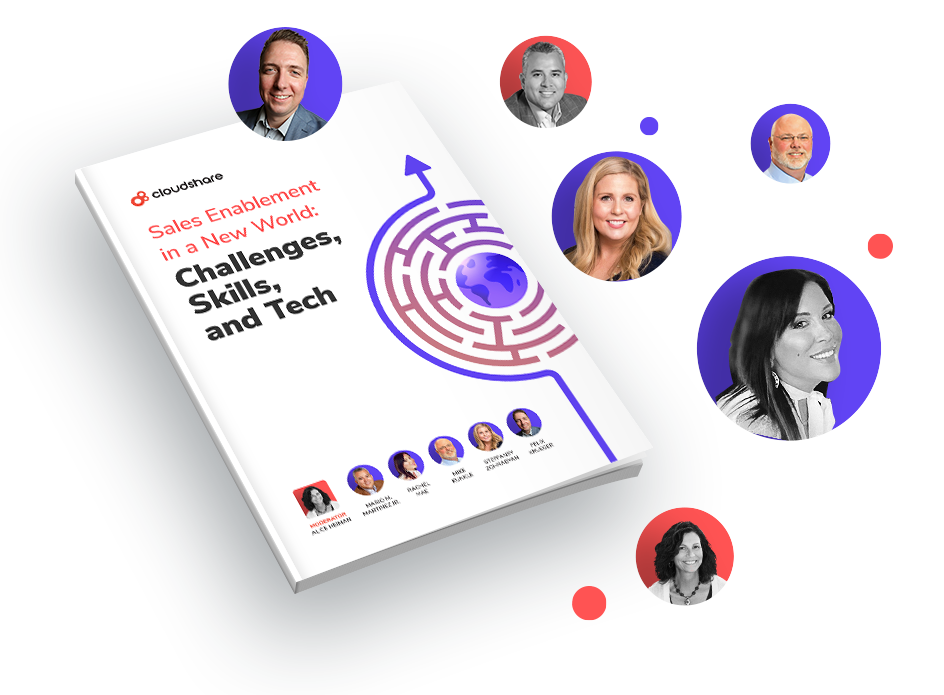4 SaaS Demo Best Practices for Better Conversions
To get articles like this free in your inbox, subscribe to our newsletter.

Sales demos can make or break your sales process. It’s your chance to convert an interested prospect into a customer. So, what kind of experiences are you providing for prospects at this crucial stage of a sale?
Here we explore why sales demos are about more than just closing a deal. They’re an opportunity to deliver exceptional learning experiences that shape the beginning of a healthy ongoing customer relationship from onboarding to training.
The age of the virtual product demo
Modern business users expect seamless digital experiences. The sales demo is an opportunity to fully engage prospects in your software, showcasing exactly how your technology is uniquely suited to overcoming their pain points and helping them achieve their business goals. To do this effectively, you need to provide interactive, personalized, and realistic experiences. Slideshows and video demonstrations do not go far enough in providing the levels of engagement required.
That’s where virtual product demo technology comes in. This technology allows you to spin up online environments where you can guide prospects through a hands-on remote simulation of using your software. It removes the need for long-winded how-tos and videos that consist of amateur footage and a voiceover by Dan from Product.
Hands-on SaaS product demos are changing the game for sales departments.
Gartner’s research into B2B buying journeys found that the sales process is no longer necessarily the main route to purchasing. Prospects don’t want a traditional sales pitch; they want something more. Yes, they are looking for more information, so they can make a fully informed decision. But they are also looking for the kind of digital experiences that not only provide a wow factor but showcase the true value of your product. That’s why we need to rethink what’s possible with sales demos.
Get expert insights from sales industry leaders

4 SaaS demo best practices
1. Personalization
Before your demo, gather as much information as you can about the prospect’s pain points. Ask if they have any specific features that they would like to see and whether there’s something that they’re having trouble finding from other vendors (this could be an easy win). Then personalize your virtual product demo so it caters to the needs of your prospect, allowing them to learn about the specific parts of the software they will likely use the most.
However, if prospects are tackling a new problem for the first time, and may not yet understand the intricacies of the task at hand. This can lead them to underestimate some of the challenges they are going to face. Work closely with your customer success managers (CSM) to get a better idea of some of the less obvious challenges your customers might face, then personalize your demo experience preemptively.
2. Involving customer success early
While it may seem premature to involve customer success during the sales and pre-sales stages, it can actually be hugely beneficial. A study by Deloitte found that while 90% of pre-sales prospects expect some involvement from customer success, only 20% actually receive any.
Customer success managers provide a number of benefits in pre-sales, both for the buyer and your business. In speaking with the prospect, CSMs are able to better understand the challenges they face, even if they can’t articulate them for themselves. This helps to build trust with prospects, but it also helps to paint a clearer picture of their needs – so sales can tailor demos to them more accurately.
3. Hands-on experiences
We learn best when we do. Hands-on virtual demos provide the kind of interactive and engaging experiences that will drive more value from this vital stage of the buyer journey. A passive experience such as a webinar can pass on information, but it won’t necessarily stick in a prospect’s head for long.
By allowing prospects to actively participate in the session, you give them a more engaging experience that sticks. When deciding which product to go for, not only do they have a more real life understanding of how your software works, but they remember more about it too. This doesn’t just sell your product to them. It begins the first stage of the customer learning process. Starting this as soon as possible means that, as customers, these clients will be far more adept at using your software. If managed correctly, this can create a base of loyal customers and product advocates, helping to build customer retention earlier in the customer life cycle.
4. Real world simulation
Give your clients the reins and let them demo your software themselves in a sandbox environment. Your prospects want to see how your software can help them achieve their business goals. So, being able to set up environments that mimic their working landscape and provide real-world scenarios will help them see the full value of your product. This gives them a feel for the interface and lets them explore features that are meaningful to them, which may not have been covered in a traditional demo.
The average B2B customer consumes 13 pieces of content before they make a buying decision—why not make at least one touchpoint stand out? The software buyer of today isn’t going to be rushed into a decision. Demo software that showcases tangible benefits with this added level of realism will boost buyer confidence and trust, speeding up the buyer journey in the process.
Better SaaS product demos with CloudShare
At CloudShare we understand how important sales demos are. And we work hard to bring you the features and functionality to help showcase the best of your product to potential customers. CloudShare is used by a growing community of sales professionals.
With CloudShare you can:
- Personalize demo experiences to suit your specific audiences
- Help inform your CSM team using usage analytics during pre-sales
- Provide the ultimate interactive, hands-on demo experience
- Simulate real scenarios in sandboxed environments
To learn more about how CloudShare can help your organization leverage virtual labs to deliver better SaaS product demos, get in touch with our team.
What you should do next…
1. Subscribe to our newsletter:
Subscribe to our newsletter below for the latest news, advice and thought-leadership for software professionals. Or visit our blog to browse our most recent articles.
2. Learn how virtual labs can grow your business:
To learn more about how CloudShare helps software organizations grow revenue, increase efficiency and improve quality, visit our resources page. You’ll be able to browser dozens of valuable white papers, eBooks, webinars, case studies, and brochures.
3. Get a FREE, no obligation demo:
Discover just how easy it is to create your cloud environment—in minutes! One of our friendly virtual labs experts will be happy to:
- Show you the platform in action
- Calculate pricing for your business
- Set you up with a 14-day free trial
- Answer any questions you have
- No pressure or obligation